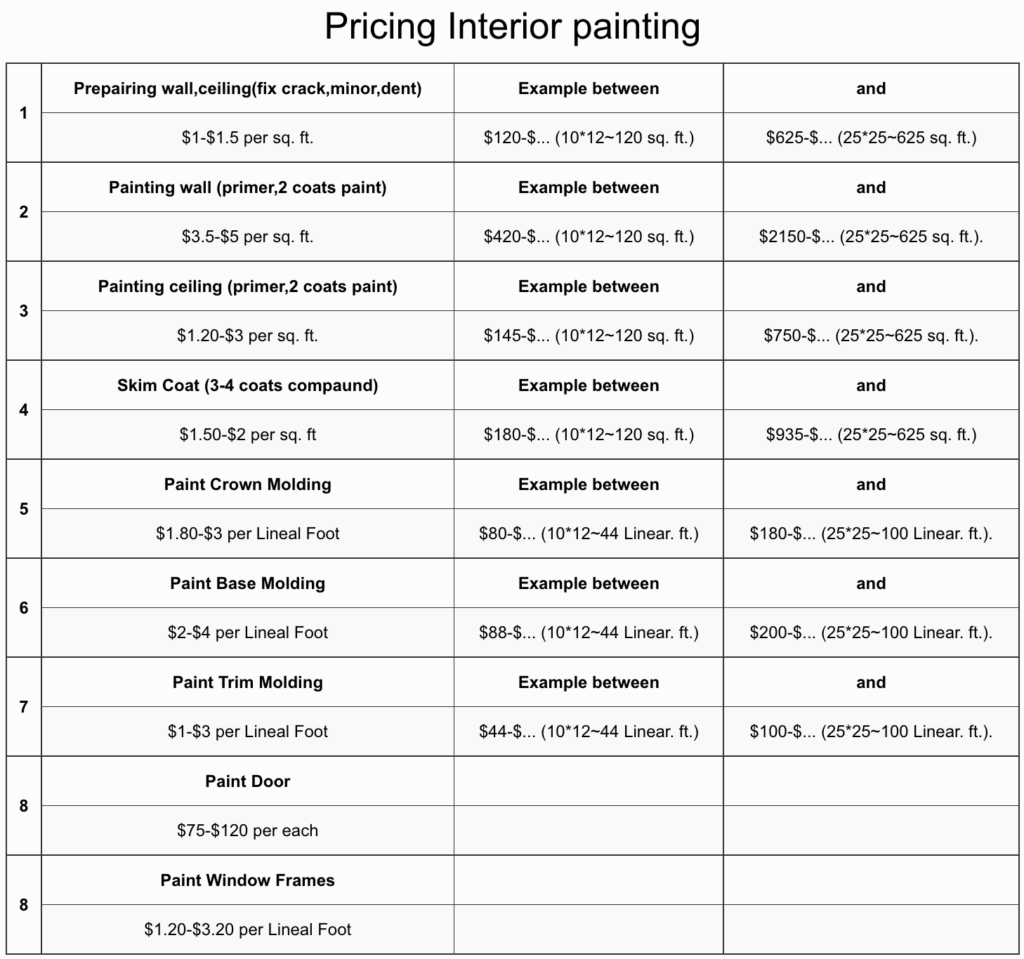Our Approach to Superior, Professional Painting
Before any general painting is started typically there are some steps that come first. Our one hour color consultation is very popular. This allows our clients to feel comfortable with the color, look and feel that they have planned for. Nothing is worse than investing in a job and not liking, or even hating the color after the job is done. Once we have the right color paint, and finish in place we can schedule the work to begin.
Careful selection and experience with particular brands and lines of wall, ceiling and trim paints allows us to deliver exceptional results to our clients. Improper paint application, sloppy or lazy methods can render any renovation or restoration project with inferior results. This is frustrating and is something we see all to often, probably as often as we hear that(anyone can paint) Having something professionally painted should mean just that, having someone who knows the materials, the paint, who knows their tools, and is a pro in their application methods. The combination of these things will produce an outcome that will be appreciated for years and years.
Preparing Walls for Painting:
1. First of all clean the walls:
To clean the walls that need to be painted, we use a vacuum cleaner or a towel.
2. Removing old paint:
To remove cracked or flaking paint, we use a paint scraper and sandpaper to smooth the surface.
3. Repairing damaged areas:
We find all the flaws and nail holes before priming and painting your walls. Loose patches of old plaster and cracks around window and door frames are some of the most common problems we may observe when inspecting your walls. After removing the old plaster, we prepare fresh plaster to repair those areas.
4. Find invisible flaws:
While some flaws are visible, others are not. We use a utility light to find the flaws. Hold the light close to the wall surface, moving it up and down. Marking any flaws notice so that we can find and repair them later. After executing all the repairs, we use sandpaper to smooth imperfections away.
5. Using tape paper/mesh tape:
Using tape paper/mesh tape implies additional work, and it usually doesn’t do much good. However, in some situations,when walls have lots of fine cracks or large repair areas, covering them with tape paper/mesh tape it can help you get a smooth, flawless base for paint.
6. Priming your walls:
If your walls are covered in a water-based paint, we can apply a coat of paint over the old color. But if you intend to paint over a semi-gloss, gloss, or oil-based color, we shoul use a primer to end up with perfectly painted walls.
We use a special stain-blocking primer although a regular primer can hide small imperfections, most products can’t cover certain marks, such as those left behind by water and permanent markers.
7. Trim:
Paint the Trim First, Then the Ceilings and Walls. We usually follow a certain order when painting a room. We paint the trim first, then the ceiling, then the walls. That’s because it’s easier (and faster) to tape off the trim than to tape off the walls.
-Flat paint it usualy used for ceiling with 0% – 4% shine
-Matte Paint color is the most common of interior wall paints.Also is non-reflective which allows them to conceal surface imperfections better than other paints.
-Matte Enamel is very much like matte paint, but incline to be far more durable.
-Satin finish 20-30% gloss is one of the types of interior wall paint most for comercial that many people know of, but few really understand.
also Eggshell and semi-gloss paint both usually cover more surface area with less paint than matte paint.
-Eggshell It’s easy to apply and can often cover well with a single coat, making it a better choice for many people.26–40%
-Semi-gloss is another general interior paint, although it’s more commonly used on trim rather than walls, and easy to clean
-Gloss paint shows all the imperfections on a wall and achieving an even coverage on a wall will often need more than a single coat.60%-80%
-Hight-gloos are typical extreme levels of glossiness of a finish for trim or doors.Semi-gloss 40-60% and high-gloss is 80-90%

